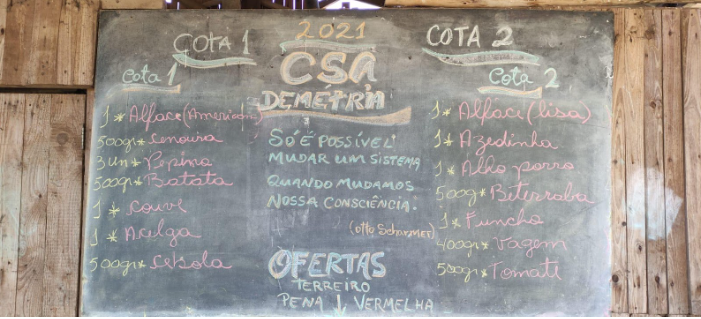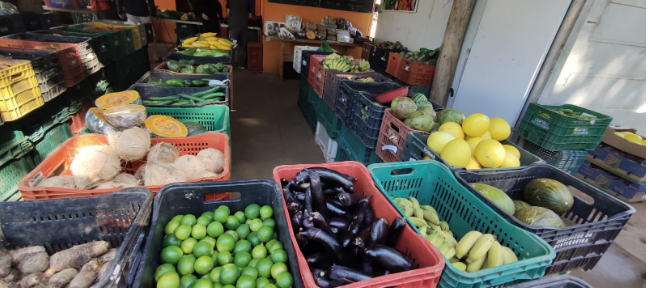Community-Supported Agriculture (CSA) Redefining the Consumer-Producer Relationship
Community-supported agriculture to promote food security
The complex global food chains have created a gap between production and consumption. Often, consumers need to get to know and communicate with the local farmers in their region. In this line, there has been a growing skepticism towards the large-scale agri-food system from consumers while producers face increasing financial pressures. Global crises, such as the Covid-19 pandemic, have emphasized the urgent to transit to more resilient local food systems to ensure community-level food security. The significance of robust local food systems that can weather unforeseen challenges has become utterly apparent. These circumstances have paved the way for alternative food networks.
Within this context, Community-Supported Agriculture (CSA) emerges as a model with the potential to usher in a new paradigm. As we delve deeper into this blog, we will explore the profound implications of CSA, uncovering its role in reshaping perspectives and fostering a more resilient approach to our food systems.
But… What Exactly is CSA and What Does It Offer to Producers and Consumers?
What is the purpose of a CSA?
Imagine a group of people coming together with a common goal. They work together to help local farmers and share in the good and bad outcomes of farming. This idea is called Community-Supported Agriculture (CSA). It’s like a direct team effort between farmers and consumers who are committed to their food system and become thoughtful “prosumers.” This teamwork involves people and one or more farmers working closely. Picture a situation where the farmer doesn’t have to deal with all the challenges, responsibilities, and rewards alone. Instead, everything comes together cooperatively, guided by a long-lasting agreement.

Blackboard with the weekly food products of a CSA in Brazil. (Source: González-Azcárate et al. 2023)
The CSA consumers make an upfront payment or subscription at the beginning of the growing season, providing farmers with essential funds to cover the costs of seeds, labor, equipment, and other necessary expenses. In return for their investment, the members of the community members receive a share of the farm’s harvest throughout the season. This share typically consists of fresh, locally grown produce such as vegetables, fruits, herbs, and sometimes even meats, eggs, or dairy products, depending on the farm’s offerings. The exact contents of each share may vary from week to week, reflecting the seasonal availability of different crops.
The principles and benefits of community-supported agriculture
The essence of CSA is built upon three foundational principles – the pillars that uphold the movement. Food sovereignty empowers local communities to shape their food systems. The solidarity economy ensures an equitable exchange that benefits both producers and consumers. The commitment to small-scale organic farming speaks to a sustainable, eco-conscious approach.
The concept of partnership transcends transactional interactions, fostering lasting collaborations. Localization radiates a positive impact within communities. Solidarity ensures fairness in economic conditions for producers and consumers. And lastly but central to CSA is trust, a direct person-to-person connection that bypasses intermediaries or hierarchy.
CSA is a diverse global movement indicating a shift towards a new perspective.
Sharing risks and benefits within CSA could be pivotal in navigating crises and uncertainties. Enhanced economic stability for farmers and amplified community support stand out as significant advantages. Furthermore, CSA allows consumers to access affordable, locally sourced, fresh products.
CSA initiatives have gained global traction, finding a home in diverse corners of the world. Countries like the United States, China, Germany, and Brazil have embraced CSA, infusing their distinct flavors into the movement. In Europe alone, an impressive 2,783 CSA experiences thrived in 2015, nourishing almost half a million individuals under the CSA definition. Beyond the CSA realm, related initiatives like consumer groups have emerged. These groups collectively purchase food directly from producers. Although they share a similar premise, they may engage in a partial spectrum of risks and rewards linked with a specific farm.

Vegetables of a CSA in Brazil. (Source: González-Azcárate et al. 2023)
Within the CSA landscape, diversity flourishes. It’s not a one-size-fits-all solution but a dynamic concept that molds itself to each community’s unique contours. CSA catalyzes crafting a distinct local food system that mirrors the individuality of the places where it takes root. Structural variations, levels of engagement, and distribution methods may differ, but the spirit of collaboration remains constant. One end of the spectrum embraces a highly collaborative model, weaving a tapestry of community and partnerships in line with ideal CSA principles. Conversely, a more instrumental model is an economic arrangement between farmers and consumers.
Delving deeper, we can classify CSA according to four distinct types:
- Farmer Managed: Led by a farmer who oversees subscribers and management.
- Shareholder/Subscriber: Residents establish a community and hire a farmer, with shareholders/subscribers highly influencing management.
- Farmer Cooperative: similar to the first model, but in this case, multiple farmers collaborate and join forces.
- Farmer-Shareholder Cooperative: Farmers and residents jointly establish and manage a CSA, sharing the full spectrum of production means, benefits, and risks – a true embodiment of community-owned goods.
How are you going to build your own community?
Whether you’re a consumer or a producer with an interest in creating a CSA, let’s explore the essential steps that will assure you the success of your effort:
- Gathering the Building Blocks: Lay the foundation with land, a skilled farmer, organized consumers, a clear vision, and a structured plan.
- Cultivating Your Consumer Group: Forge connections, form partnerships, host public meetings, and organize social events to create a robust support network.
- Enlisting a Willing Farmer/s: Network within agricultural circles, highlight mutual benefits, approach direct sellers, and consider emerging talents.
- Crafting a Clear Plan: Develop a well-defined plan involving everyone, structure the group, understand stakeholder needs, define shared values, and explore adaptable models.
- Securing Land and Support: Identify suitable land based on your product goals and raise awareness through effective messaging, marketing support, and engagement with diverse groups.
- The Power of Review and Improvement: Regularly evaluate your progress, making necessary adjustments based on assessments.
Tap into the international network at www.urgenci.net for additional resources and support.
References
Bashford, J., Cross, K., Eichinger, W., Georgakakis, A., Iserte, M., Kern, F., … & Wendland, M. (2013). European handbook on community-supported agriculture. Sharing experiences. Vienna, URGENCI.
Cristiano, S. (2021). Organic vegetables from community-supported agriculture in Italy: Emergy assessment and potential for sustainable, just, and resilient urban-rural local food production. Journal of Cleaner Production, 292, 126015. https://doi.org/10.1016/j.jclepro.2021.126015
Feagan, R., & Henderson, A. (2009). Devon Acres CSA: Local struggles in a global food system. Agriculture and human values, 26(3), 203-217. https://doi.org/10.1007/s10460-008-9154-9
González-Azcárate, M., Silva, V. L., Cruz-Maceín, J. L., López-García, D., & Bardají, I. (2023). Community Supported Agriculture (CSA) as resilient socio-economic structures: the role of collaboration and public policies in Brazil and Spain. Agroecology and Sustainable Food Systems, 1-32. https://doi.org/10.1080/21683565.2023.2230171
Perényi, Z., Iserte, M., Paun, G., & Valeška, M. V. (2016). Be part of CSA! Supporting booklet for training on community-supported agriculture. URGENCI.
Renting, H., Marsden, T.K., Banks, J., 2003. Understanding alternative food networks: exploring the role of short food supply chains in rural development. Environ. Plan. A. https://doi.org/10.1068/a3510.
URGENCI. (2016). European CSA Declaration. https://urgenci.net/wp-content/uploads/2016/09/European-CSA-Declaration_final-1.pdf
Volz, P., Weckenbrock, P., Nicolas, C., Jocelyn, P., & Dezsény, Z. (2016). Overview of community supported agriculture in Europe. URGENCI. Augbane, France.









































































